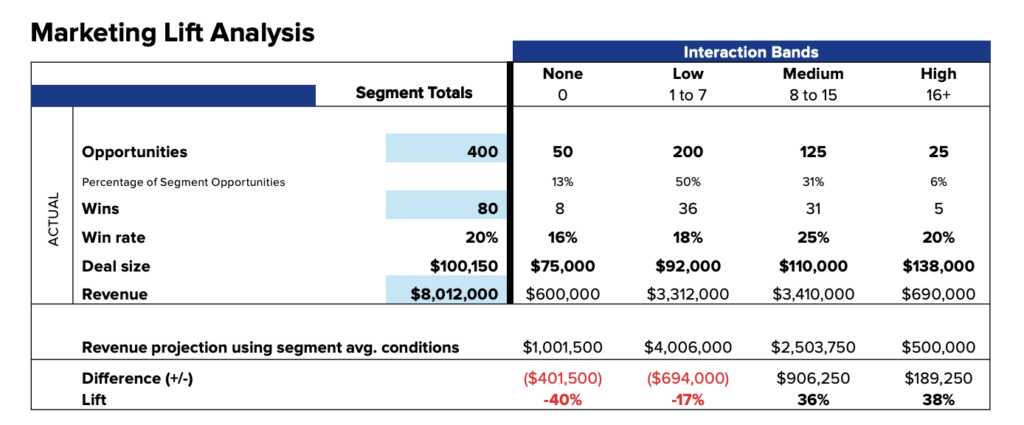I’m sure you are measuring marketing efforts, but is the data giving the full picture of marketing effectiveness?
I see a lot of teams determined to demonstrate Marketing’s ROI, without fully understanding why. Tracking sourcing alone is not enough to show how Marketing provides value to the business. True marketing is about impacting the customer lifecycle, and should be tracked across the customer journey.
Are you measuring Marketing effectively?
Nearly 40% of marketers don’t or rarely measure ROI, pipeline growth, or conversion rate improvements.
A lot of marketing metrics focus on sourcing, which only accounts for a fraction of the value marketing provides. I will take you through the importance of measuring marketing’s impact on the full customer journey.
Start with How your Customers Buy
37% of purchases involve 1-2 people
48% of purchases involve groups of people across several departments
14% of purchases are decided by committee
As a B2B Marketer, you need to recognise that buying groups often make the decision to buy. Measuring the sourcing of an individual does not measure marketing’s role for the group.
Sourcing also does not equal revenue. Marketing plays a role in taking the group from prospect to customer.
What is the alternative?
We’ve established that solely focusing on sourcing is not a true demonstration of the value Marketing provides.
We can measure marketing with these demand performance indicators:
- Target to Engaged – Percentage of overall target market reaching engaged demand stage.
- Sufficient Pipeline – Percentage of pipeline value that has experienced a minimum number of marketing interactions.
- Marketing Lift – Percentage increase in revenue when a minimum number of interactions occur.
- Investment to Revenue Lift – Ratio of program investment to lifted revenue.
Target to Engaged
This shows the share of an overall target market that you are trying to win. If the share increases, you can demonstrate that marketing is helping the business compete for the right deals (and show the Marketing team’s understanding of the target market).
Sufficient Pipeline
Analyse deals from the past quarter to the past year, compare the number of meaningful marketing interactions they’ve had and where the threshold is for higher win rates and larger deals.
This is demonstrated in the spreadsheet below.

Marketing Lift
This is the most important metric and alternative to ROI. It shows the increase in revenue when there have been enough meaningful interactions with marketing.
To calculate the marketing lift, look at the average deal size and win rate for varying levels of marketing interactions. The difference between the projected and the actual amounts is the marketing lift.
Investment to revenue lift
This demonstrates how increasing the investment in marketing will lead to better outcomes. Calculate it by dividing the revenue lift by the amount invested in marketing programmes. Put it as a ratio to 1, and aim to decrease this ratio as marketing increases the value compared to the investment.
Showing Marketing’s True Value
Marketers can better demonstrate their value to the company through examining the full customer journey and the impact on deal size and wins.
After all, 73% of B2B revenues come from existing customers – winning the client is just part of the picture.
Get in touch to create better processes for your marketing team.
